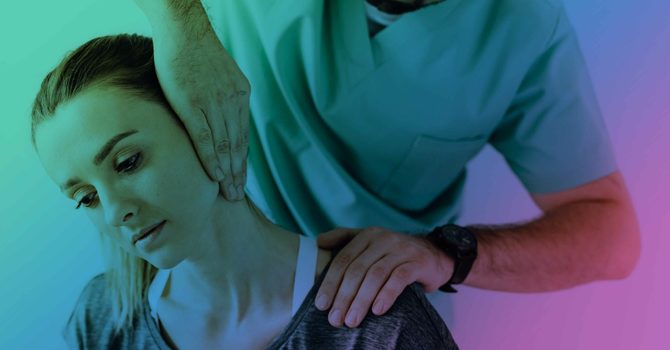Tension Type Headaches | Migraines
Denner Chiropractic & Performance | Pineville, North Carolina
Tension headaches, commonly referred to as stress headaches, arise from the tightening of muscles in the neck, jaw, and scalp. This heightened tension in the muscle groups surrounding the skull often manifests as symptoms including a dull ache or sharp pain in various regions of the head in response to:
- Stress
- Injury
- Poor Posture
- Eye Strain
A migraine is characterized by recurrent episodes of moderate to intense throbbing and pulsating pain localized to one side of the head. There are a number of factors that can cause an individual to experience migraines some include
- Hormonal Changes
- Sleep Disturbances
- Certain Medications
- Diet/Food Sensitivities
- Vigorous Exercise
- Stress
What is a Tension Headache?
A tension headache refers to head or facial discomfort triggered by the tightening and heightened tension in the muscles of the neck, jaw, and scalp. These headaches typically endure longer compared to other types and are often aggravated by poor posture, increased activity, or sudden injuries.
Manifesting in various regions around the head, tension headaches present with symptoms such as a band-like pressure, pain at the base of the skull, and localized discomfort on the top of the head or temporal side.
Although tension headaches can be intense, this form of headache is non-life threatening. They can effectively be managed through manual therapy, providing significant relief.
What is a Migraine?
Migraine, a distinct type of headache, is frequently misdiagnosed as other forms of headaches. It encompasses two main categories: those with aura and those without. An aura refers to a visual disturbance that precedes the onset of a migraine headache.
The aura may present as:
- Floaters
- Blurred vision
- Temporary blindness
- Cloudy circles
- Rainbow-like vision
- Sensory disturbances
When an aura accompanies a migraine, it consistently appears just before the migraine commences.
Migraines are headaches that adhere to specific criteria, including:
- Headache duration lasting from 4 to 72 hours
- Predominantly affecting one side of the head or face
- Exhibiting pulsating pain
- Potentially inducing nausea or vomiting
- Accompanied by sensitivity to light and noise
What causes a Migraine?
Different Theories Behind The Exact Cause Of A Migraine.
1. Migraines were historically believed to stem from vascular occurrences. It was once thought that the onset of a migraine resulted from a severe bout of vasoconstriction, causing a narrowing of blood vessels and giving rise to aura or other pre-migraine symptoms such as sensory disturbances.
Later, vasodilation would occur, resulting in a sudden surge of blood flow to the head, culminating in the throbbing and pounding headache often described during a migraine episode.
2. The current theory on the cause of migraines is the result of an excitatory phase where a number of molecules rapidly cross the membrane barrier in our neurons. This rapid exchange can lead to pre-migraine symptoms. Soon after the body tries to correct and as a result causes an energy deficit known as the "spreading depression" phase where the onset of headaches are experienced.
Treatment for Tension Headaches
Sports Chiropractic and Rehab | Pineville, NC
Efficient treatment of tension-type headaches revolves around the targeted reduction of muscular tension surrounding the head, neck, and jaw. Decreasing muscle tightness results in a notable reduction in both headache intensity and frequency. Techniques such as fascial manipulation are particularly effective at swiftly addressing muscular tension for lasting relief.
Treatment of Tension Type Headaches
- Soft Tissue Techniques (Fascial Manipulation)
- Dynamic Neuromuscular Stabilization (Powerful rehab technique used to lower muscle tone)
- Joint Manipulation
- Dry Needling
Patient Reviews and Testimonials
Frequently Asked Questions
Q: What is a tension headache? A: A tension headache refers to head or facial discomfort triggered by the tightening and heightened tension in the muscles of the neck, jaw, and scalp. These headaches typically endure longer compared to other types and are often aggravated by poor posture, increased activity, or sudden injuries. Tension headaches can be managed effectively through manual therapy, providing significant relief.
Q: What is a migraine? A: A migraine is a distinct type of headache frequently misdiagnosed as other forms. It encompasses two main categories: those with aura and those without. An aura, which can include visual disturbances like floaters, blurred vision, or temporary blindness, may precede the migraine. Migraines adhere to specific criteria, including headache duration lasting from 4 to 72 hours, predominantly affecting one side of the head or face, exhibiting pulsating pain, potentially inducing nausea or vomiting, and being accompanied by sensitivity to light and noise.
Q: What causes a migraine? A: There are different theories regarding the exact cause of migraines. Historically, migraines were believed to stem from vascular occurrences, with vasoconstriction followed by vasodilation leading to the characteristic symptoms. However, the current theory suggests migraines result from an excitatory phase where molecules rapidly cross neuronal membranes, leading to pre-migraine symptoms. Subsequently, an energy deficit known as the "spreading depression" phase occurs, accompanying the onset of headaches.
Q: What are ocular migraines? A: Ocular migraines, also known as visual migraines, are a subtype of migraine characterized by visual disturbances like flickering lights, zigzag lines, or temporary blindness in one eye. They can be triggered by similar factors as traditional migraines, such as neuronal excitability and changes in cerebral blood flow.
Q: What do migraines feel like? A: Migraines can present with various symptoms, including throbbing or pulsating head pain, sensitivity to light and sound, nausea, vomiting, and aura (visual disturbances or other sensory changes that may precede or accompany the headache).
Q: What are vestibular migraines? A: Vestibular migraines are a subtype of migraine characterized by episodes of vertigo or dizziness, often accompanied by headache symptoms typical of migraines. These episodes can be disabling and may last for hours to days.
Q: What are chronic migraines? A: Chronic migraines are defined as migraines occurring on 15 or more days per month for at least three months, with at least eight of those days meeting the criteria for migraine headaches. They can significantly impact daily functioning and quality of life.
Q: What are migraines with aura? A: Migraines with aura are a subtype of migraine characterized by specific neurological symptoms, known as aura, that precede or accompany the headache. Aura symptoms can include visual disturbances (such as flashing lights or zigzag lines), sensory changes (such as tingling or numbness), and language difficulties.



